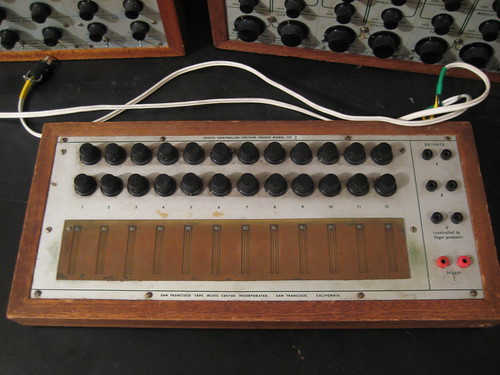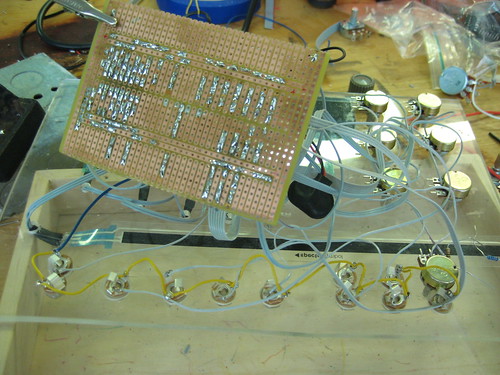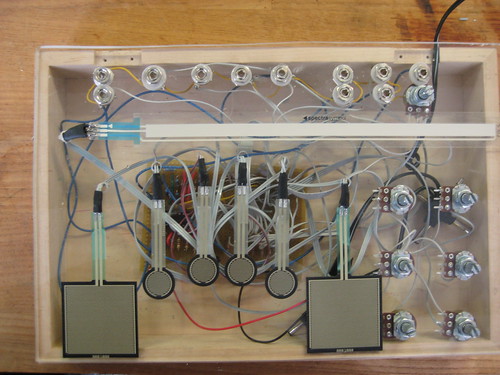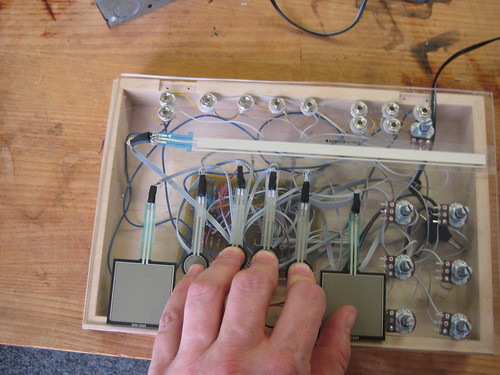Here’s one project I’ve managed to complete this semester. For a while I have wanted a tactile controller for my analog setup. As much as I enjoy letting the machine play itself, there are certain situations where it is preferable to have the instrument “shut up” when I’m not touching it (as David Wessel would put it.) This kind of control has been notably absent in situations where I am playing with acoustic musicians.
I was initially inspired by the touch capacitance controllers designed by Don Buchla for his modular synths. Here is one of two Buchla touch controllers we have at Mills:
I like how Buchla’s design doesn’t really have anything to do with a traditional keyboard – this seems logical given how new the electronic instrument paradigm was when Buchla built his first synth in 1964. Buchla’s synthesizers were designed to make experimental electronic music, or live “tape music” as it was called back then. But the Moog approach caught on commercially, and soon people associated synthesizers with piano style keyboards and electronic emulations of acoustic instruments.
Each touch plate is pressure (actually capacitance) sensitive and has adjustable control voltage (cv) range. There is also a sample and hold circuit to “remember” the most recent voltage. I wanted to make something similar, but quickly realized that with today’s sensor technology I could make something with the same functionality and a lot less trouble using force sensing resistors, or FSR’s. James Fei has a small box with FSR’s and I tested James’ controller to make sure this was what I wanted.
I wanted my controller to be compact and easy to play with one hand, with an ergonomic layout of the touch pads. I also wanted a linear potentiometer used in ribbon controllers to supplement the pressure sensors with a different kind of gestural control. I decided that each sensor should have an adjustable cv range like the Buchla, separate cv out, that the two larger touch pads and the ribbon would have individual trigger outputs for opening VCA’s and triggering envelopes, and that there would be a master trigger output. The circuitry is quite simple – 12v comes in, each sensor has a voltage divider to send the variable voltage out, and a LM339 comparator chip is used to process 5v trigger voltage outputs.
Here are some photos of the build process.








